Issue 17 Flipbook

Read issue 17 as a flipbook

Read issue 17 as a flipbook

What a crazy year 2020 has been. As I write this in May, we’ve faced the worst bushfires on record, affecting hundreds of towns and communities across Australia. Now a global pandemic continues to have a devastating effect across the globe. Although our lives have been completely altered, it is amazing how quickly we adapt and start to accept this new normal.
I want to start by acknowledging that this is an incredibly difficult time for a lot of people. Being forced to self-isolate has meant job losses, financial hardship, a rise in depression and mental health issues; and there have been the deaths of more than a quarter of a million people, worldwide. Let’s not forget those affected by the fires; many of whom are still living in caravans and having to self-isolate in cramped and uncomfortable conditions.
There are silver linings, however. At the time of writing this, pollution across the world has fallen dramatically. People can see the stars in places where they have never been able to see them before. Mountains have come into view as the smog clears and blue skies appear. Families are spending more time together. People are stepping out into their gardens and onto balconies and growing food.

Email your letters and photos to editorial@pipmagazine.com. au. We’d love to hear what you think of Pip and if you’ve embarked on any projects as a result of our articles. Each issue, one published entrant will receive a limited edition Pip Magazine art print, printed with archival inks on beautifully textured archival 300 gsm rag paper.
Hi Pip,
I came across an idea recently that has rocked my thinking and views on permaculture. Perhaps you’ll share my interest. It’s this: self-sufficiency is poverty.
Skills today have advanced to a point where they take tremendous dedication to master. You can be barely competent, or you can trade with someone (likely dollars) to do it better and faster for you.
If I can make $60/hr doing my work, should I be spending an hour making a loaf of bread that I can buy for $4? Sometimes it’s fun to DIY. Occasionally you can get a better result. But as a strategy, as a way of living? I’m starting to think it’s a mistake.
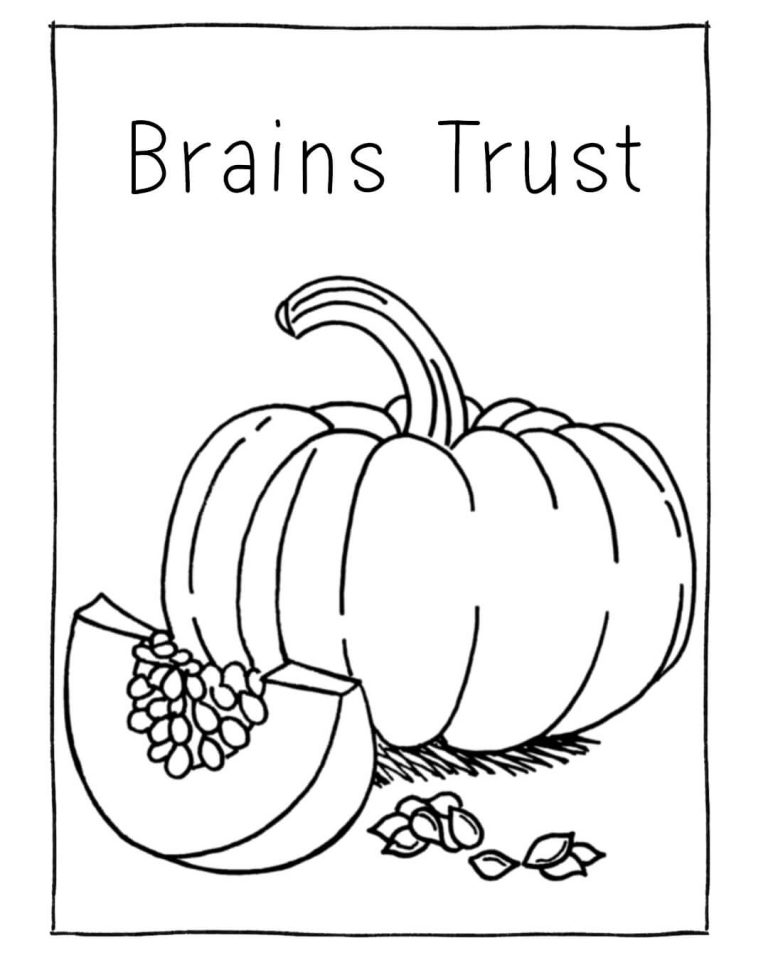
How do I repair burnt soil?
After fire, there remains copious amounts of ash on the ground and this contains potassium carbonates and elements such as phosphorus and magnesium. This is beneficial to all gardens at the rate of one shovelful per square metre. Dig in with an eco-hydrating soil-wetter to overcome hydrophobicity.
How do I make the right decisions about caring for fruit trees after damage from radiant heat and fire?
Don’t cut back the burnt trees immediately after the firefront has passed through. Always wait at least six weeks and check to see if there is life in the branches. Scratch the bark through to the cambium layer (the tissue layer just under the bark where plant growth occurs), focusing from the extremities towards the trunk. When dealing with grafted fruit trees, the normal occurrence is new growth movement below the graft. If there is no leaf growth above the graft, ie, the scion, you have probably lost the tree. Citrus trees seem to be more badly affected than other fruit trees because of the nature of the sap. Those that survive will need to be carefully pruned back to live growth. The application of eco-seaweed, a solution containing 16% potassium, helps relieve plant stress after fire events and will assist recovery. Apply the mixed solution over the foliage and around the dripline, monthly, during the growing season.
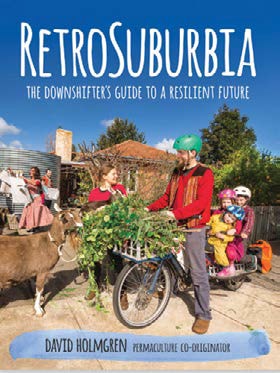
To place your event here, email editorial@pipmagazine.com.au
RETROSUBURBIA
Permaculture co-originator, David Holmgren, has launched his bestselling book, RetroSuburbia: the downshifter’s guide to a resilient future, published as a pay-what-you-feel online book. His decision is in response to the latest health and economic crisis, that has galvanised enthusiasm in permaculture and kindred circles. David hopes his book will inspire those who have been ‘stuck’ at home with digital access and time to read.
online.retrosuburbia.com
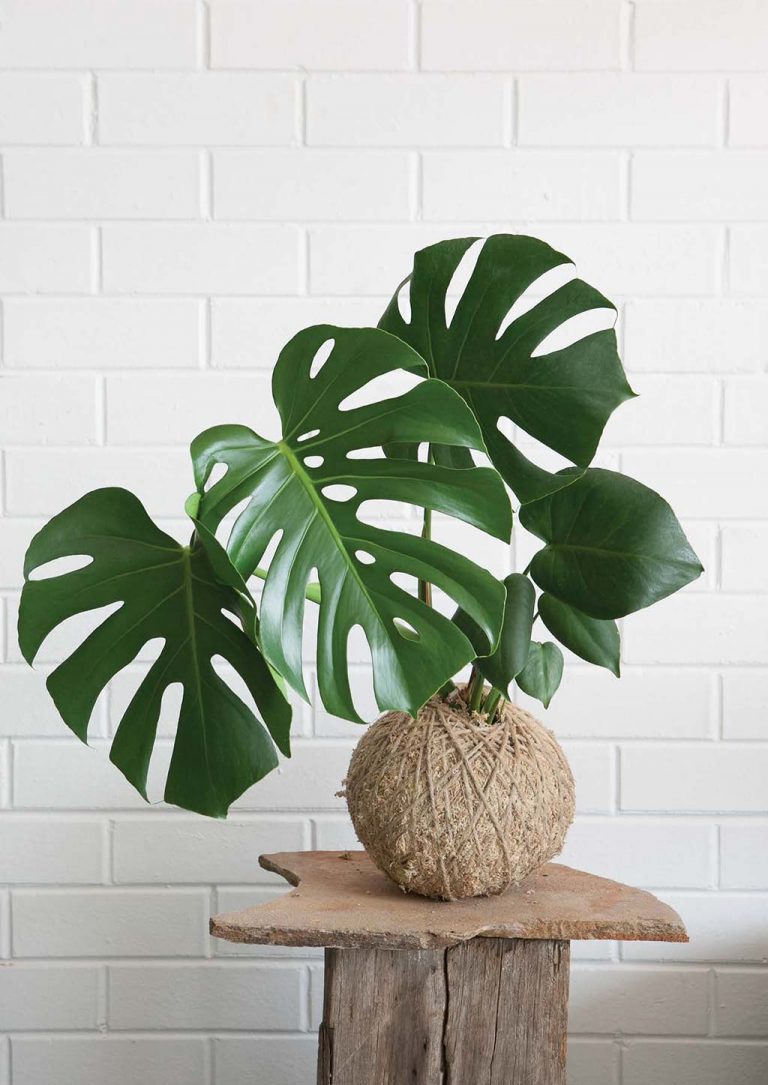
Indoor plants are a quick and easy way to bring your garden and the beauty of nature into your home. They can visually appeal, with variegated leaves and sometimes stunning floral displays that are unique to indoor plants. They can also improve the health of your home.
We breathe in oxygen and breathe out carbon dioxide and, through the process of photosynthesis, plants convert this carbon dioxide back into oxygen. But it’s more than this oxygen release that provides benefits to the environment around us; plants help clean the air inside your home, reduce anxiety and stress, and filter toxins from the environment. Research has shown that indoor plants are great for offices because they can calm your sympathetic nervous system, reducing stress and helping you to feel more alert and productive.
Volatile organic compounds (VOCs) such as benzene, formaldehyde and carbon monoxide, found in building materials such as paint, carpet, plastics and electronic equipment, release gases and pollute our indoor space. Research suggests that plants and microorganisms in the soil may have a role in cleaning, or detoxifying, indoor air of these organic compounds.
Bring the outdoors inside by introducing some stunning plants to your home. Indoor plants add an organic feel to your home or office and bring an element of nature to your living spaces. Here are our top five indoor plants:
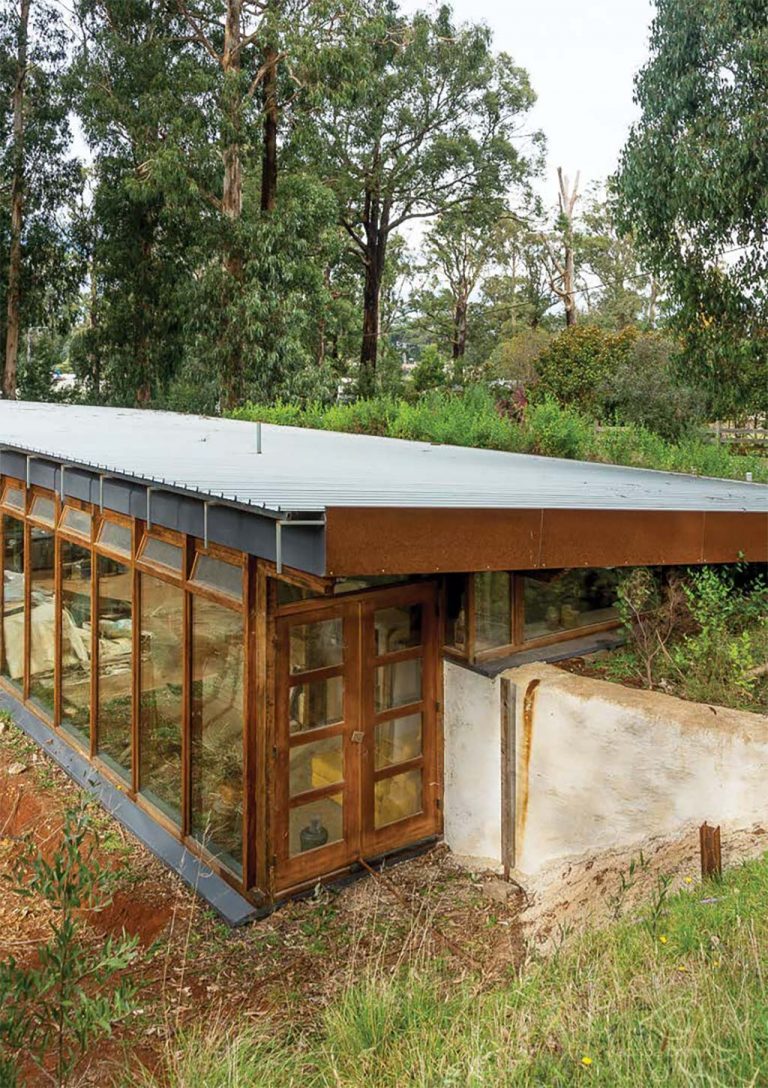
Daryl Taylor lost his home in the firestorm that destroyed most of Victoria’s Kinglake in February 2009. On that day, 173 lives were lost and more than 3500 buildings destroyed. Following the fires many people left the community. Daryl, an elected member of the recovery committee, was pivotal in rebuilding the Kinglake community.
On the day of the fires Daryl, partner Lucy and daughter Maggie were caught at their friends’ property as the firestorm hit. The house they were in burnt down around them and they were lucky to escape with their lives. On returning home, Daryl found the fire had burned through the pine timber structure and up into the roof. It took him 20 hours to put out this fire. By that time, inside the house was burnt and ruined, the roof was destroyed, and only the mudbrick walls remained standing.
‘Our little muddy has always been a social setting and as a community development worker this is important to me. Prior to the 2009 bushfires, we would regularly host dinner parties at our ten-seater table. We were close friends with 15 couples who regularly graced our dining room. Sadly, most have separated and moved on since the fires,’ explains Daryl.
Nine months after their home was destroyed, Daryl and his family were able to move back to the property, living in a 1940s hardwood cottage they had salvaged from demolition. They installed a new vegetable garden, re-established the orchard, brought home ducks and chooks and began planting deciduous, fire-resistant plants. Although they were living in cramped conditions, Daryl felt it was the right decision to get back on the property as soon as possible after a fire.
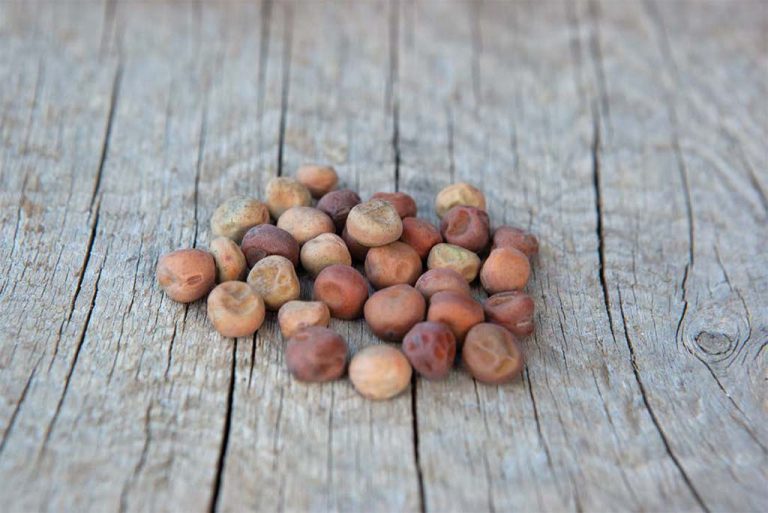
Pisum sativum var. sativum – pisum means pea; and sativum means cultivated, in Latin.
Origin
One of the most ancient old-world vegetables, the garden pea can be traced to the Bronze Age. It was domesticated in Europe and later in southern Russia, Armenia, northern India, Pakistan and the mountains of Ethiopia. Primitive peas were found in the city of Troy. This vegetable reached China early in the Tang Dynasty, 600 to 900 BCE.

‘I will never forget the day that Poppy lit the first fire on country in front of me… “I’m gonna light the grass now, like the old people used to do,” Poppy said loudly and proudly.
He walked over to the stringybark country and ripped off a long piece of bark from the closest tree… He teased one end of the long piece of bark, lit it up and then walked through the boxwood patch in a repetitive, figure eight type movement… I watched him dancing through the flames like some kind of fire spirit… Soon there was nothing but fire in front of me, but it was only seconds before it started to calm down. Then he reappeared in the middle of the fire, walking over the flames with his bare feet, giving me the biggest smile.’
Over decades we have heard about the many massive wildfires in southern parts of Australia. I remember a few occasions of sitting with Elders, watching bushfire reports on the news. The old people would watch TV, feeling really sorry for the people and the country.
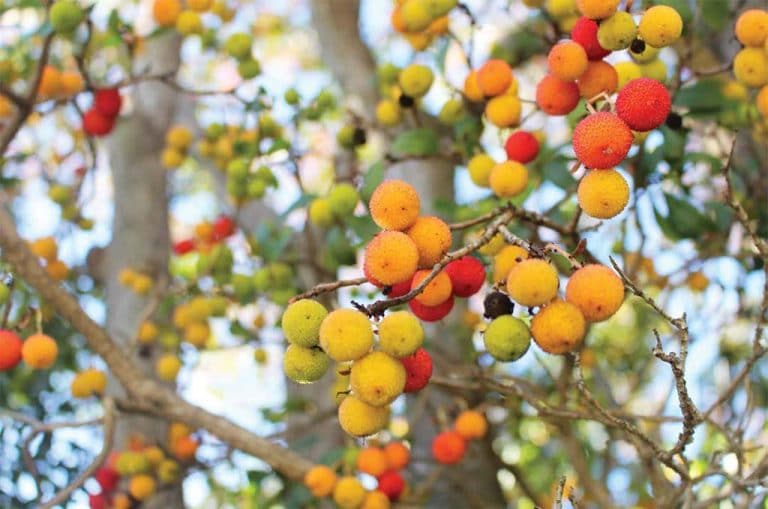
The Irish strawberry tree (Arbutus Unedo) is named for the plant’s prevalence in Ireland, although it grows across much of Europe, and the resemblance of its fruit to (you guessed it) strawberries. A member of the heath family, along with blueberries, the Irish strawberry tree has been culturally and historically important in many European growing regions.
The scientific name, Arbutus unedo, references Pliny the Elder, and is commonly thought to refer to the fact the fruit is not as delicious as a strawberry (unedo is a contraction of Pliny’s ‘unam tantum edo’, translated as, ‘I only eat one’). Don’t let the name put you off – the fruit are quite palatable and very fuss-free to grow.
These medium-sized evergreen trees are long-lived, grow well in a wide variety of soils and will tolerate the extremes of drought and frost; although variable weather can impact on successful fruiting. Sweet, nodding,